- Concrete Stain Home
- Get the Look - Stained Floor Pictures
- Color Chart: Concrete stain colors
- Comparison Chart: Compare acid stains, water-based stains and dyes
- Stain Buying Tips: Questions to ask before you buy
- How to Stain Concrete
- Types of Stains and Coloring Options
- Acid-Based Stains
- Water-Based Penetrating Stains
- Concrete Dyes
- Concrete Paint
- Exterior Concrete Stain: Click through images of outdoor stained concrete projects
- Stains and Equipment Product Reviews
- Troubleshooting Concrete Stains
- Common Staining Issues: Tips from expert Chris Sullivan
- Removing Stains from Concrete
Soy-Based Concrete Stain Is Eco- and User-Friendly
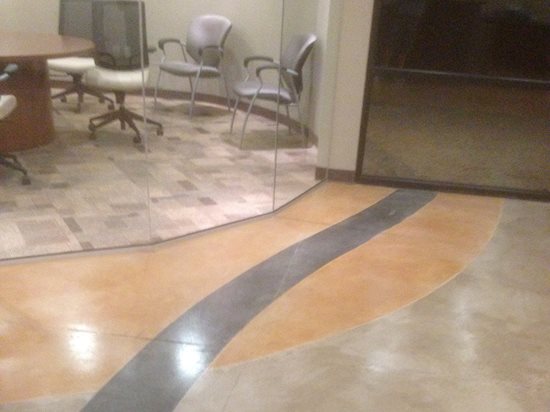
Soy-based foods have long been lauded by health fanatics for their dietary benefits. Now a new nonedible use for soy as a stain for concrete is proving to have some pretty healthy benefits for decorative concrete installers as well. SoyCrete, a bio-based concrete stain from Eco Safety Products, achieves the variegated color effects of an acid stain without the use of toxic acids or film-forming polymers.
Soy-based foods have long been lauded by health fanatics for their dietary benefits. Now a new nonedible use for soy as a stain for concrete is proving to have some pretty healthy benefits for decorative concrete installers as well. SoyCrete, a bio-based concrete stain from Eco Safety Products, achieves the variegated color effects of an acid stain without the use of toxic acids or film-forming polymers.
"SoyCrete uses a proprietary soy-ester emulsion instead of acid or a paint-film-type acrylic technology. We wanted the look of an acid stain with natural variegated color effects, and wanted to avoid conventional film-forming stains that would peel or flake. As a result, SoyCrete gives you complete color control, like water-based acrylics, yet achieves integral coloring that will only wear by erosion when applied to a properly prepared porous substrate,” says John Bennett, president of Eco Safety.
Completely biodegradable and nonhazardous, SoyCrete also meets the low-emitting materials criteria of LEED and other green certification standards as well as criteria for the use of renewable resources and recycled content. SoyCrete contains more than 40% bio-based recycled content to replace the petroleum-based solvents typically used in penetrating stains.
Benefits for contractors
Jed Vowers of V Stained Concrete, Scottsdale, Ariz., began using SoyCrete last year when it was specified for one of his projects, and now he uses it on many of his jobs, including the projects pictured here. For him, the key advantages are the color options and the fact that you don’t have to neutralize the stain and clean numerous times to remove acid residue. “The chemicals from soy are harmless, and acid stain can be very harmful if the applicator is not wearing a mask. I prefer to use SoyCrete on indoor projects because of the idea of not having to clean the floor over and over and having to ventilate the harmful fumes of an acid stain,” he says.
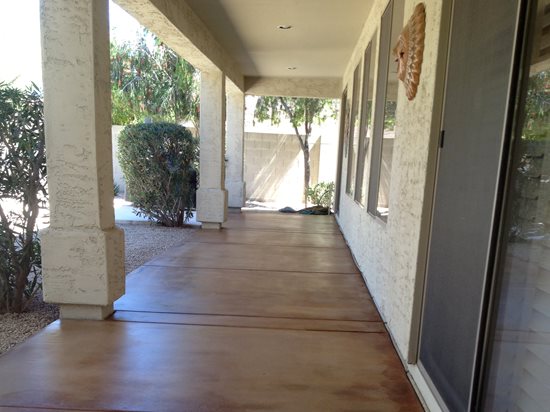
Equally suitable for outdoor projects, SoyCrete contains UV-resistant resins and colorfast pigments that help to prevent fading. If the color does fade after time, a new color coat of SoyCrete can be applied without the need for stripping. (Contractor: V Stained Concrete)
Another advantage of SoyCrete is the low cost -- up to 60% less (under 10 cents per square foot) than a typical acid or polymer-based stain. “Our technology allows colorization with up to 50% less material, so our coverage is more than double that of conventional stains, from 400 to 600 square feet per gallon,” says Bennett.
SoyCrete is faster to install as well, allowing contractors to save additional money in labor costs. “There is no neutralization required or extra time to observe final color outcome. Our technology penetrates and integrally bonds versus waiting for a reaction process,” says Bennett.
Applications and color options
SoyCrete can be applied by a pump-up sprayer or microfiber or foam applicator to virtually any well-prepared porous substrate, including exterior concrete pavements, concrete countertops, masonry block, brick, fiber cement and stucco. It can also be used to enhance or repair acid stains and faded integrally colored concrete. Vowers will often grind floors before applying SoyCrete to ensure better penetration of the stain into the concrete.
SoyCrete is available in 16 standard pretinted colors as well as a tint base that contractors can custom color with premeasured colorant packs. Because the stain is penetrating and nonfilm forming, it achieves semi-transparent color effects similar to an acid stain. “SoyCrete installed correctly can look just like acid stain and you have so many more colors to choose from,” says Vowers. “There really are no limitations with the product. I have put it inside and outside and have had very good luck so far.”
For more information about SoyCrete, including product data sheets, a color chart and demonstration video, visit www.eco-safety.com.
Related:
Soybean-Based Mastic Remover
Eco-Friendly Concrete
Return to Concrete Stain Product Reviews
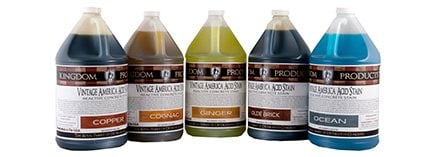 Vintage America Acid Stain
Organic, antique patina, deep penetrating reactive stain.
Vintage America Acid Stain
Organic, antique patina, deep penetrating reactive stain.
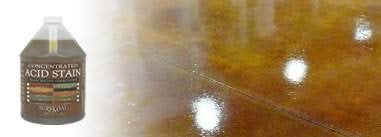 Acid Stain by Surfkoat
Makes up to 2 gallons. Great for marble look.
Acid Stain by Surfkoat
Makes up to 2 gallons. Great for marble look.
 Stain-Crete by Increte
9 standard colors. Useful for old or new concrete.
Stain-Crete by Increte
9 standard colors. Useful for old or new concrete.
 Elements® Transparent Concrete Stain
Water-based, environmentally and user-friendly
Elements® Transparent Concrete Stain
Water-based, environmentally and user-friendly
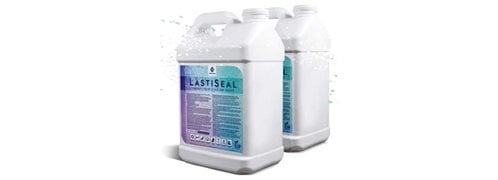 Concrete Stain + Sealer in One
Waterproof, strengthen, preserve and beautify in one step
Concrete Stain + Sealer in One
Waterproof, strengthen, preserve and beautify in one step
 Concrete Acid Stain
BRICKFORM Blush-Tone Acid Stain available in 10 standard colors
Concrete Acid Stain
BRICKFORM Blush-Tone Acid Stain available in 10 standard colors
 In-Fluence Water-Based Stain
24 non-reactive colors that transform concrete.
In-Fluence Water-Based Stain
24 non-reactive colors that transform concrete.




